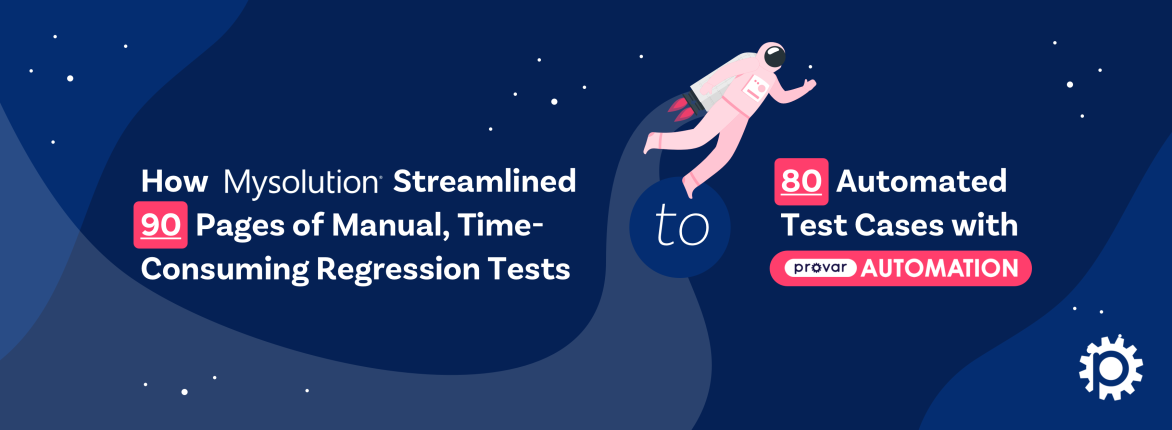Key Stats
- 106 unique personas across 24 business groups and 60 sandboxes
- From 40 tests in 8 hours to 156 tests in 7 hours.
Introduction
Balancing speed and quality in software delivery is a critical challenge that only continues to grow. Queensland University of Technology (QUT) embarked on an ambitious journey to modernize its technology landscape with a large-scale Salesforce implementation. This case study explores how QUT achieved seamless quality testing at speed and scale, ensuring robust solutions while meeting the demands of their stakeholders.
Background
QUT is an innovative university utilizing Salesforce to transform how it engages with students, staff, and partners. The implementation spans across 24 distinct business groups, integrating over 2 million data points into a unified platform. This comprehensive system supports operations ranging from student outreach and inquiry to personalized communication and professional education offerings.
The scale of the initiative involved:
- Over 750 frontline agents to deliver support pre-, during, and post-study.
- A unified Salesforce org to replace 25 legacy systems and databases.
- Integration of marketing, experience, and commerce cloud capabilities.
The project’s complexity demanded a robust testing framework capable of balancing the university’s speed of delivery with uncompromising quality assurance.
The Challenge
Balancing speed and quality is a constant friction point in large-scale implementations. QUT’s stakeholders required rapid delivery to ensure timely value realization while safeguarding against production defects. Key considerations included:
- Protecting the institution from severe defects.
- Ensuring incident-free production deployments.
- Enabling iterative development and rollout without compromising reliability.
QUT needed a robust testing approach that integrated automation with traditional testing methodologies, ensuring coverage, speed, and adaptability.
The Solution
Establishing a Roadmap for Quality
QUT’s testing journey began with a clear roadmap — emphasizing team structure, tools, governance, and DevOps maturity. Key steps included:
- Building a foundational testing base: Manual test cases were meticulously crafted, covering end-to-end scenarios critical to business workflows.
- Automation testing: Once the manual baseline was established, automation was introduced to maintain consistency and scalability. Automation testing was integrated into sandboxes and regression suites to ensure smooth releases.
- DevOps enablement: Automated environment creation, complete with synthetic data and test users, was prioritized to support seamless testing and deployment processes.
Key Roles in Testing
To ensure successful execution, QUT identified essential roles within their testing ecosystem:
- Test Manager: Developed comprehensive test plans integrating automation and manual testing.
- Lead Automation Tester: Established technical foundations, best practices, and reusable processes.
- Automation Testers: Focused on refining, executing, and maintaining automated test cases.
- Technical Leads and DevOps Engineers: Prepared test environments for seamless execution.
These roles operated within a collaborative framework, forming cross-functional “clans” to standardize practices and reduce single points of failure.
Persona-Based Testing
QUT adopted a persona-driven approach, ensuring testing aligned with real-world user scenarios. By tailoring test cases to diverse personas, the team validated features and workflows effectively. With over 106 unique personas across 24 business groups and 60 sandboxes, managing test users became a significant challenge – one that was possible to address with the advanced capabilities of Provar.
Automated Testing in Action
Automated testing best practices and advanced capabilities provided by Provar played a central role in achieving scalability and speed. Key elements included:
- Testing Manual Cases First: Ensuring that all manual test cases passed in production environments before automation.
- Conversion to Automation: Gradually transitioning manual cases into automated regression suites.
- Persona-based testing: Building and executing tests as multiple personas accelerated testing speed and coverage.
- Iterative Refinement: Testing and optimizing automation scripts through repeated execution.
- Parallel Execution: Running tests concurrently across sandboxes to save time and resources.
Through optimization and parallelization, QUT scaled its automation from 40 test cases across two parallel execution streams (taking eight hours) to 156 cases over six parallel execution streams (completed in seven hours). This progress exemplifies the power of strategic scaling in automation testing.
Best Practices for Scaling Automation
QUT’s success in scaling automation testing offers valuable lessons for organizations embarking on similar journeys:
- Isolation of Tests: Ensure tests execute independently without interference from others.
- Prioritize High-Impact Areas: Focus on high-risk and high-value scenarios first.
- Plan for Scalability: Design architecture that accommodates future growth.
- Optimize Resource Allocation: Balance execution time with available infrastructure.
Outcomes and Benefits
The structured approach to testing enabled QUT to:
- Deliver high-quality software releases with reduced risk.
- Accelerate deployment cycles while maintaining robust quality assurance.
- Enhance collaboration among technical and business stakeholders.
- Streamline operations by eliminating 25 legacy systems.
- Provide an improved experience for students, staff, and partners.
Conclusion
QUT’s journey exemplifies the transformative potential of combining strategic planning with Provar’s cutting-edge testing technology. By leveraging Provar Automation, embracing persona-driven testing, and fostering collaboration, QUT achieved its ambitious goals of quality testing at speed and scale. This case study serves as a blueprint for organizations seeking to modernize their testing practices and ensure successful digital transformation.










